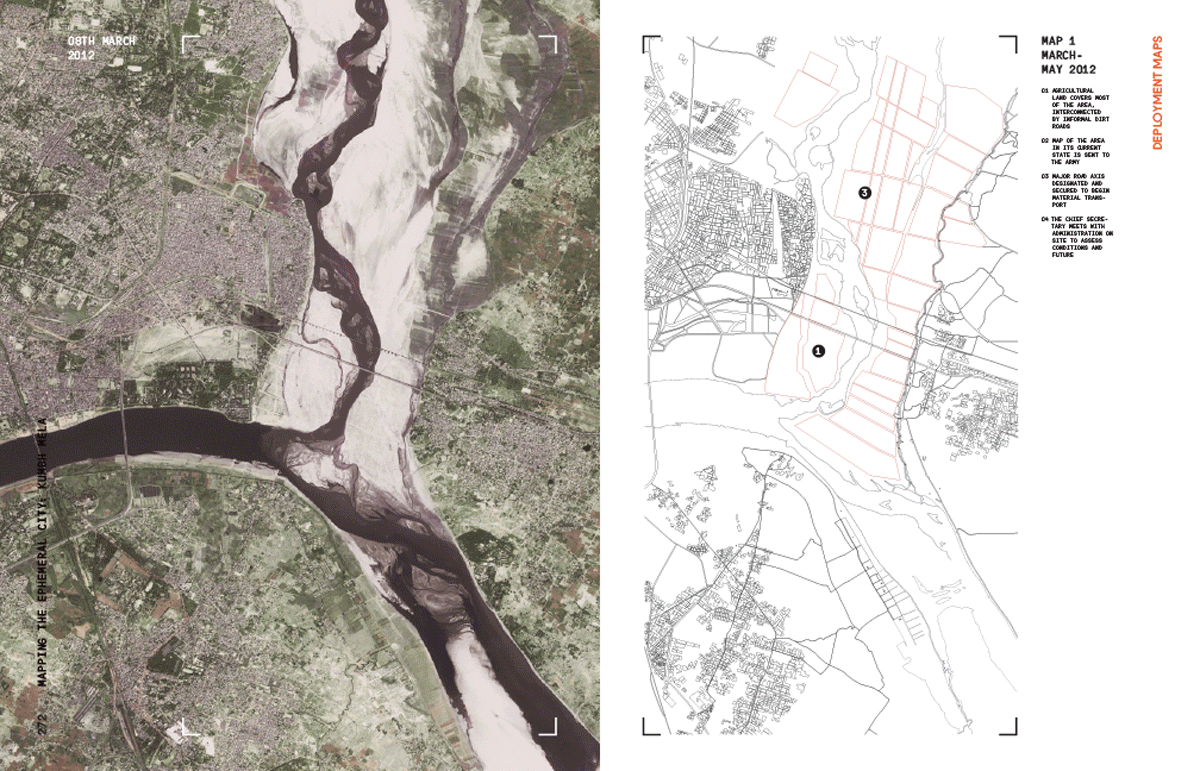Kumbh Mela: Mapping the Ephemeral Megacity
The Kumbh Mela is the largest religious celebration on earth and the biggest public gathering in the world. The resulting settlement is a virtual mega city. The Kumbh Mela deploys its own roads, pontoon bridges as well as tents serving as residences and venues for spiritual meetings, and social infrastructure such as hospitals, sanitation outlets and vaccination clinics-all replicating the functions of an actual city. The pop-up settlement seamlessly serves up to seven million people, who gather for 55 days, and an additional flux of 0 to 30 million people, who come for cycles on the six main bathing dates.
In 2013, a team from Harvard University, representing faculty from multiple disciplines, researched the large-scale event from its preparation to the actual celebration itself. This was the first systematic study on the Mela as a City: a planned entity, and covers issues of social inclusion, diversity, and even democracy that emerge under the framework of a neutralizing grid of roads that is the organizing armature of the city. This subdivision of the city forms clusters of freedom and facilitates space for individual and group expression. The volume presents the comprehensive research findings and includes city maps, aerial images, analytical drawings and photographs of this spectacular Ephemeral Mega City for the Kumbh Mela.
The Kumbh Mela: Mapping the Ephemeral Megacity book and exhibition consolidate research findings and serve as an example of interdisciplinary research conducted between the Harvard University South Asia Institute, Harvard University Graduate School of Design, Harvard Global Health Institute, Harvard T. H. Chan School of Public Health, FXB Center for Health and Human Rights, and Harvard Business School.
LOCATION
Allahabad, Uttar Pradesh, India
PARTNERS
FXB Center for Health & Human Rights
Government of India
Government of Uttar Pradesh
Harvard Business School
Harvard University Faculty of Arts and Sciences
Harvard University Global Health Institute
Harvard University Graduate School of Design
Harvard University School of Public Health
Harvard University South Asia Institute
PUBLISHER
Hatje Cantz
ROLE
Project Management, on-site research, contributor as part of Harvard team
Exhibitions
India Habitat Centre, New Delhi, India
Harvard University, Cambridge, USA
Universidad Adolfo Ibanez, Santiago, Chile
Press
Can Big Data From Epic Indian Pilgrimage Help Save Lives?, Somoni Sengupta for New York Times
What Urban Planners Can Learn From a Hindu Religious Festival, Tom Downey for Smithsonian Magazine
Harvard’s next case study: The logistics and economics behind Kumbh Mela, the largest human gathering in history, Logan Plaster for Quartz.
Faith in a Smart City, Mark Tully for Indian Express
Maha Kumbh much better organized than Fifa World Cup, says Harvard book, Subhash Mishra for Times of India
The inspiring Kumbh lesson, Rahul Jacob for Business Standard
Harvard book chronicles Maha Kumbh success saga, Subhash Mishra for Economic Times
In book, Harvard chronicles success of Maha Kumbh, Amita Verma for Asian Age
Harvard pats Kumbh, Sumi Sukanya for The Telegraph
Harvard, MIT touch to Kumbh planning, Swatee Kher for Times of India











